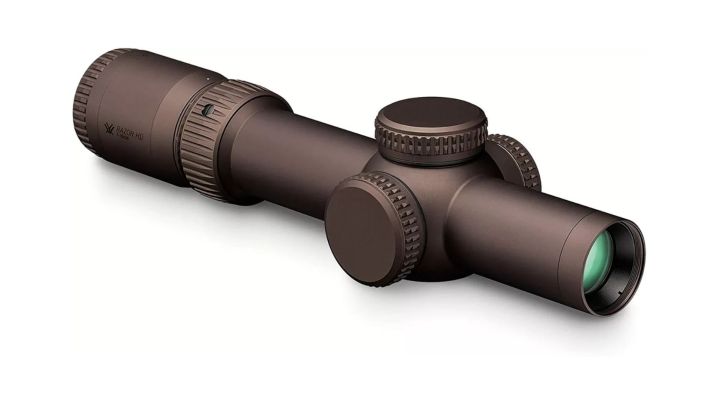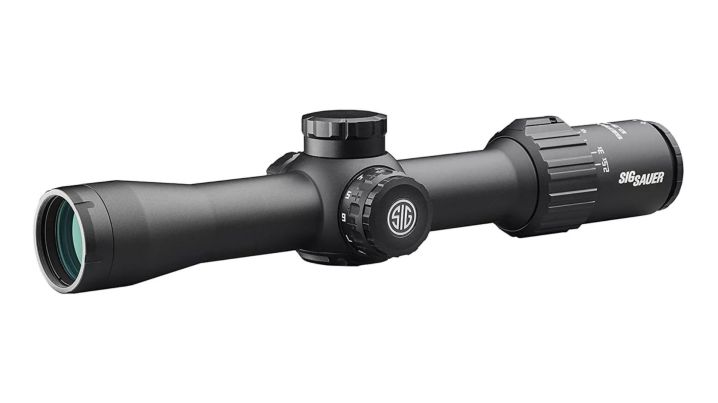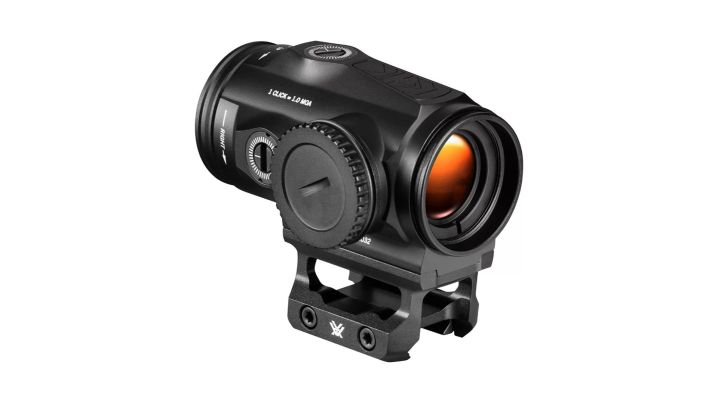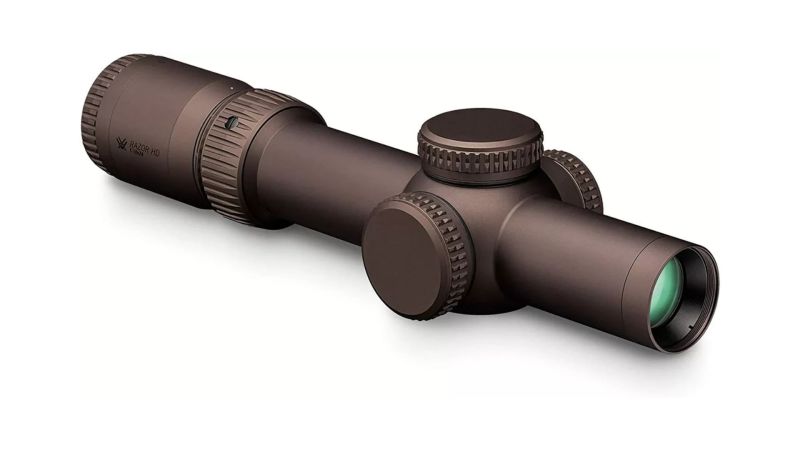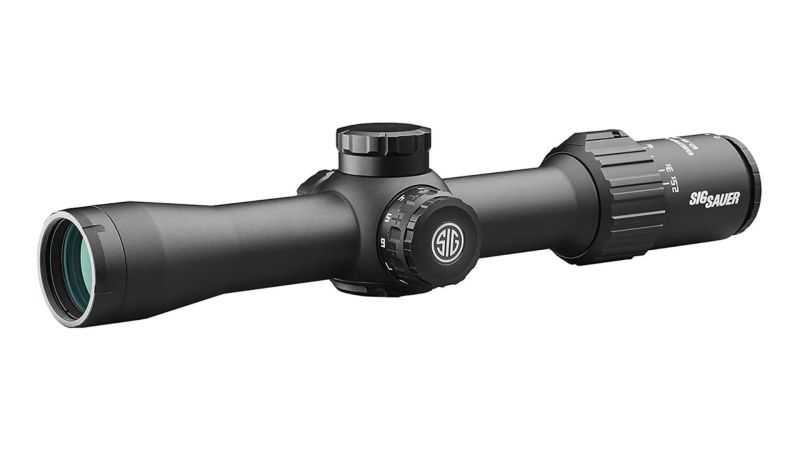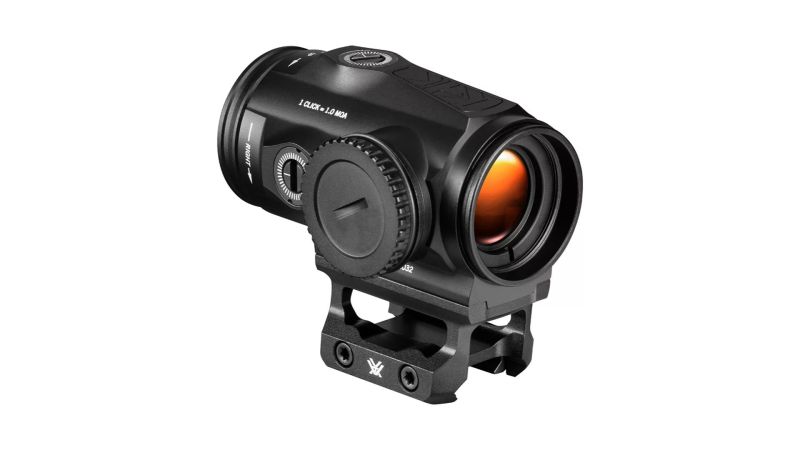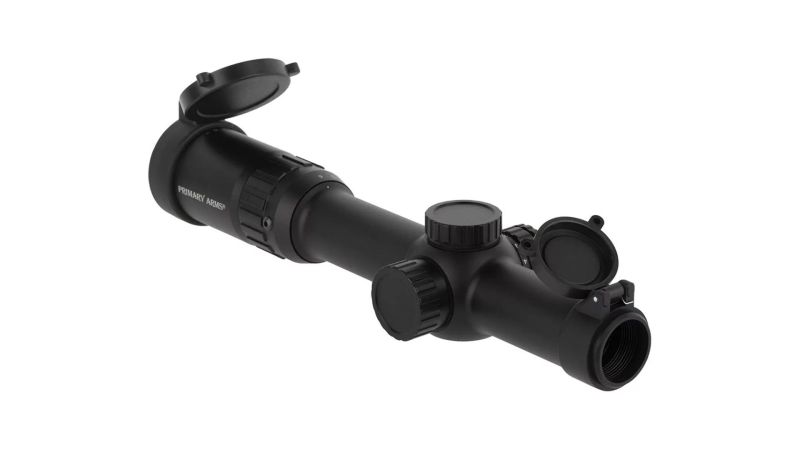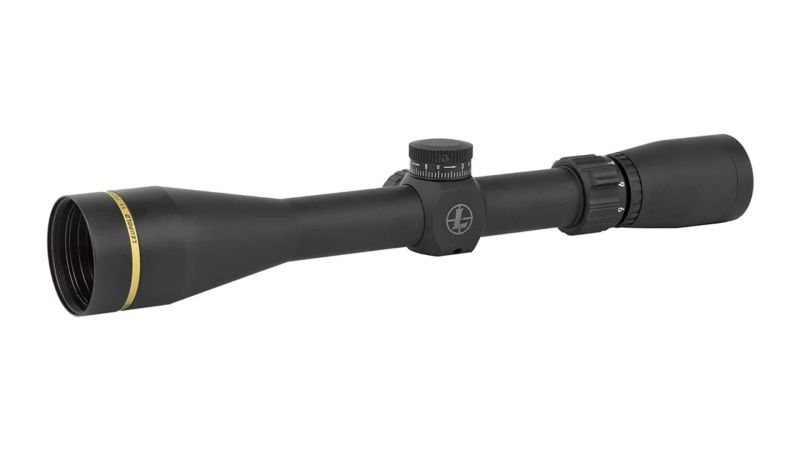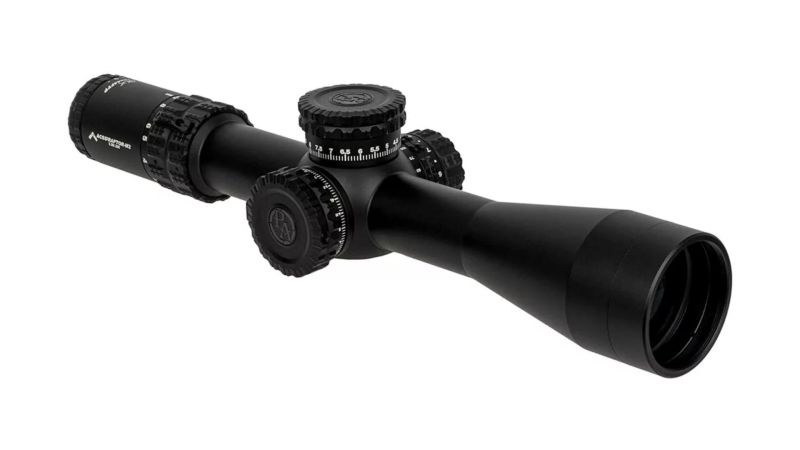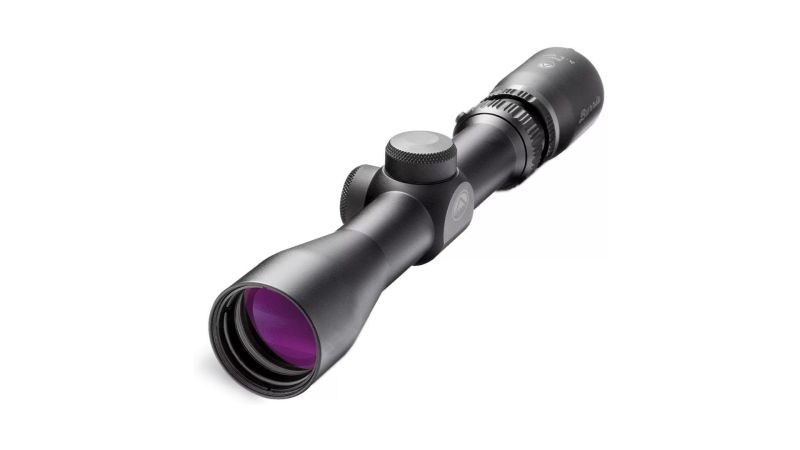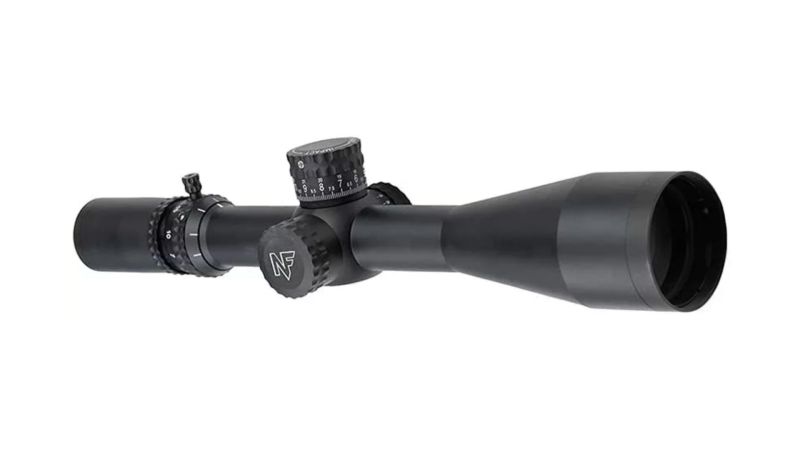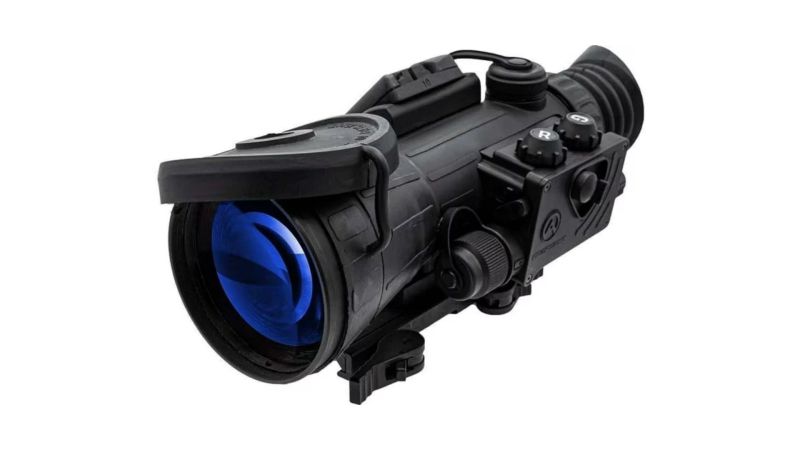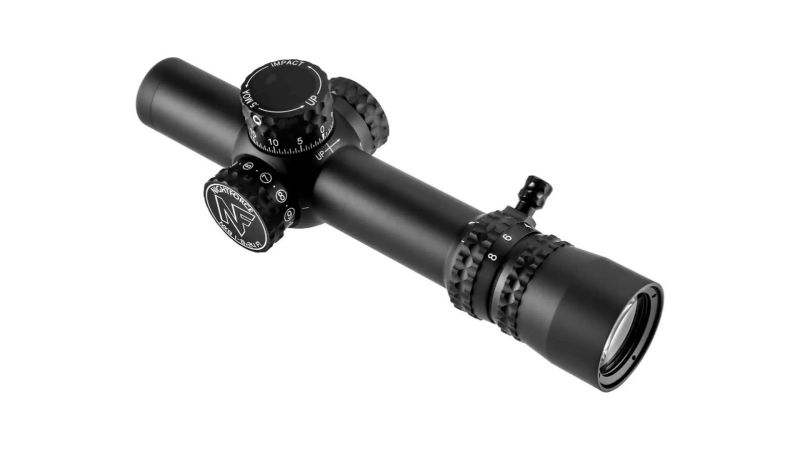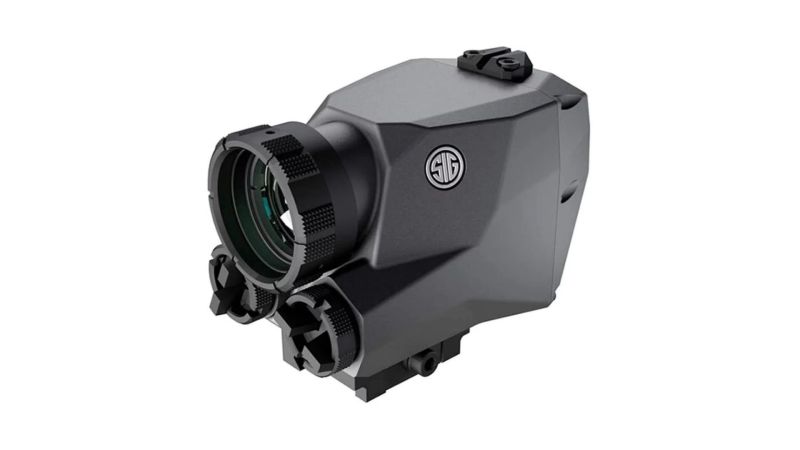We may earn revenue from the products available on this page and participate in affiliate programs.
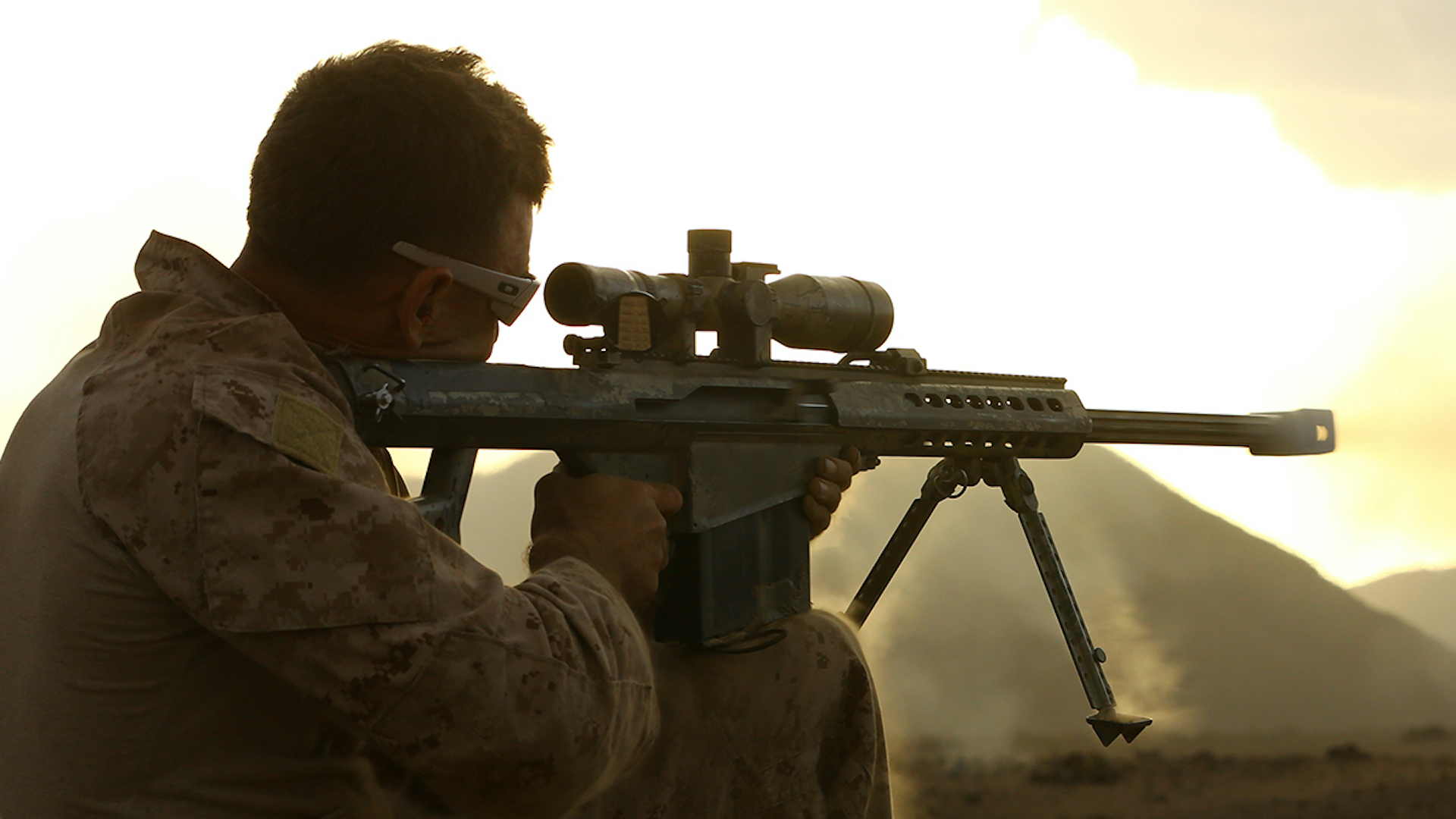
How do you find the best rifle scopes? Well, you start right here and scroll down. Today, we are covering a complicated topic as simply as possible. Rifle scopes encompass various categories and subcategories, and we are bringing it all to the table.
We hunted down the best optics on the market to bring you options for hunting, AR 15s, owning the night, and more. We aim to provide a little something for everyone and try to find a variety of optics at various price points. Let’s dive in and swim in the world of glass, reticles, and tubes.
Methodology
As a shooter, I’ve been using optics for more than a decade, mainly terrible optics. I’ve learned what qualities make an optic useful and, more importantly, what doesn’t. That expertise in bad optics makes it easy to recognize the good in scopes. Plus, once exposed to quality optics, it’s hard to go back and even harder to suggest bad ones.
I used my own experience to inform my selection for this article and relied upon various trusted sources for my top picks. I used advice and recommendations from experts and professionals like pro shooters, hunters, guides, instructors, and special operations personnel. I also considered suggestions by personalities with a credible reputation like GarandThumb and InRangeTV.
Best Overall
Vortex Razor HD Gen 3 1-10x
Best Value
SIG Sauer Sierra3
Editor’s Choice
Vortex Spitfire HD Gen 2
Best for AR-15
Primary Arms SLx 1-6X FFP
Best for Hunting
Leupold VX Freedom
Best FFP
Primary Arms GLx 2.5-10X FFP
Best Eye Relief
Burris Scout Scope
Best Long-Range
Nightforce ATACR 7-35x
Best Night Vision
Armasight Vulcan 4.5x Rifle Scope
Best Tactical
NightForce NX8
Best Thermal
SIG Sauer Echo-1 2-12x
Benefits of a rifle scope
The main benefit of using a rifle scope is that it makes accurate shooting easier. A scope can come with features like magnification or illumination that make it easier to see your target and reticles that make it easier to aim. If you have an easier time seeing and aiming at your target, you’ll have an easier time hitting your target as well.
Key features of a rifle scope
Magnification
Most types of rifle scopes are designed to magnify your target, so you can see it from far away. How much magnification you need depends on your range. You’ll want little to no magnification for close distances and a lot of magnification for long distances. How much magnification you get depends on your optic.
Manufacturers will list a scope’s magnification power using three numbers. For example, you might see an optic with “3-9x40mm.” This describes the magnification range and diameter of the objective lens. The “3” is the minimum magnification setting, the “9” is the highest magnification setting, and 40mm refers to the diameter of the objective lens.
Glass clarity
If you’re aiming for precision, you’ll want as clear of a picture as possible. Therefore, you’ll want the image quality to be consistent as you increase your scope’s magnification power. While you won’t be able to determine glass clarity until you actually look through a scope, there are certain characteristics that result in greater glass clarity.
- Extra-low dispersion glass, or ED glass, is an optical term referring to a lens that eliminates chromatic aberrations and maintains clear color palettes. ED glass will help improve image sharpness and contrast at maximum magnification.
- Lens coatings do a lot of things for glass clarity. They protect the glass, maintain clarity, and can reduce glare and/or reflection.
- Place of manufacture is another good indicator of glass clarity. Companies in countries like Japan and Germany typically make optics with premium glass quality.
Durability
A rifle scope should be durable enough to hold a zero through recoil and general wear and tear, which is no easy task given that it’s essentially a tube full of small parts and glass. Some brands have a better reputation for durability than others, but that’s not the only indicator.
In general, lighter scopes with few moving parts will inherently be more durable than heavier scopes with lots of moving parts. The reason is it has less weight moving back and forth and fewer parts to break. For example, you’ll recognize this when you see something like “one-piece tube construction.”
Additionally, manufacturers might give their optics environment ratings. The Ingress Protection rating, or IP rating, is a standard for how well an item holds up against water or dust. The rating system determines to what degree it’s waterproof or dustproof. Also, some manufacturers will say if their optics meet military specifications (Mil-Spec) for resisting impact and vibration.
Reticle
The reticle is what you use to aim to your scope. A simple example of a reticle is a crosshair, which you aim by placing the point in which the lines intersect on the X and Y axis on your target. While there are innumerable reticle designs available, a handful pops up more often than not. Still, you’d pick a reticle based on your needs and preferences.
Simple reticles are better for short-range shooting and quick engagement. For example, when you use a red dot, you just aim the red dot at what you want to shoot. On the other hand, complex reticles like a Bullet Drop Compensator reticle — aka BDC reticle or Christmas tree reticle — essentially offers a series of expanding crosshairs running down the X axis, allowing you to make adjustments without touching your scope.
Types of rifle scopes
Variable scopes
Variable scopes serve the most basic purpose for rifle shooting. They allow you to increase or decrease the magnification of your target so you can see it at various distances. The technology relies on using a large objective lens to magnify your target. In turn, you’ll be able to see farther away with a larger lens, but the scope will be bigger and heavier as well.
Variable scopes are extremely common for shooters of all skill levels, but they’re preferred for precision and long-range shooting. Because they’re designed to magnify far-away targets, they’re a poor choice for close-range shooting.
LPVO
A low-powered variable optic, or LPVO, is designed for close- and mid-range shooting. The magnification setting starts at 1x or 1.55x, meaning there’s little to no magnification of your natural sight, but LPVOs are available for up to 10x magnification.
LPVOs are also equipped with an illuminated reticle, which gives you an easier time seeing at close range. While not as effective as a red dot, it’s pretty dang close. Nonetheless, an LPVO’s reticle works without illumination as well.
LPVOs are one of the more versatile types of optics. They can be used for tactical applications, hunting, competitive shooting, and much more.
Night optics
There are two types of night optics: night vision and thermal. The differences between them are significant in terms of technology and price, but comparing the two is like comparing apples to oranges. They’re both great options for nighttime shooting activities.
A night vision optic amplifies ambient light, so you can see in low light conditions. It reveals the world in hues of green or white, and you can see incredible detail in the imagery depending on the lighting conditions and range. However, too much light will wash out the image. Compared to thermal scopes, night vision costs less.
A thermal optic (aka infrared optic or IR optic) highlights the heat signatures of the objects around you. Hotter objects appear brighter and colder objects appear darker. While you’ll have an easier time identifying living objects, details are not always clear as night vision. However, thermal scopes capture infrared light, which cannot be detected by the human eye, so it’ll work in daylight and absolute darkness. It tends to be more expensive than night vision.
Prism optics
Prism optics are jack-of-all-trades optics. They’re low-profile, rugged, and have simple controls. They have either no magnification or some magnification, but they’re fixed power, so you can’t increase or decrease magnification, which is their main drawback. Lastly, they have a very usable reticle that’s often accompanied by illumination.
Pricing considerations for rifle scopes
Budget
Good budget optics in the $250 to $500 price range typically have a lower magnification range than standard optics. A budget optic should maintain zero and take a fall or two without breaking.
Mid-range
Between $500 and $1,500, mid-range optics is where we get into decent optics for nonpermissive environments and weather, and where we can see slightly higher magnification settings and higher durability specifications. Mid-tier optics start to get into some basic tactical optics with excellent options at the $1,000 mark. We get illumination, fingertip adjustable turrets, and similar fancy features, along with higher levels of magnification with matching clarity at this price point.
Premium
Once you start spending over $1,500, you are into the world of premium rifle optics. All good night optics enter this arena, and the optics used by pro shooters will be here, too. Here we get all the fancy features, including awesome reticles, the smoothest magnification rings, metal-on-metal adjustments, and more. These optics allow you to have more powerful levels of magnification with unbeatable clarity.
FAQs on rifle scopes
You’ve got questions, Task & Purpose has answers.
Q: How do I mount a rifle scope?
A: Follow the instructions. Scopes attach in a variety of ways, and it typically involves ensuring you have the right eye relief and height, attaching the mount to the gun, and the scope to the mount.
Q: How do I zero a rifle scope?
A: By following the directions? In general, you take the optic to the range, look at the target, and fire three rounds. Use the turrets to adjust the elevation and windage to adjust from where your projectiles impacted. Repeat until you are hitting the target.
Q: How much should I spend on a rifle scope?
A: The general rule of thumb is to take the cost of the rifle and spend half of that on an optic. I advise you to spend as much as you can and just avoid crappy optics. However, don’t expect premium performance from a budget optic.
When you buy a rifle, budget for an optic. Make that a consideration from the very beginning. Avoid spending less than $250 unless you find an insane sale or on Black Friday. Spending less than $250 on a magnified optic is a good way to get a not-so-great rifle scope.
Let’s say you find yourself shopping for optics with a budget of $800 and are looking at a $600 optic and a $1,000 optic. I’d save up the extra $200 and go for the better glass every time.
